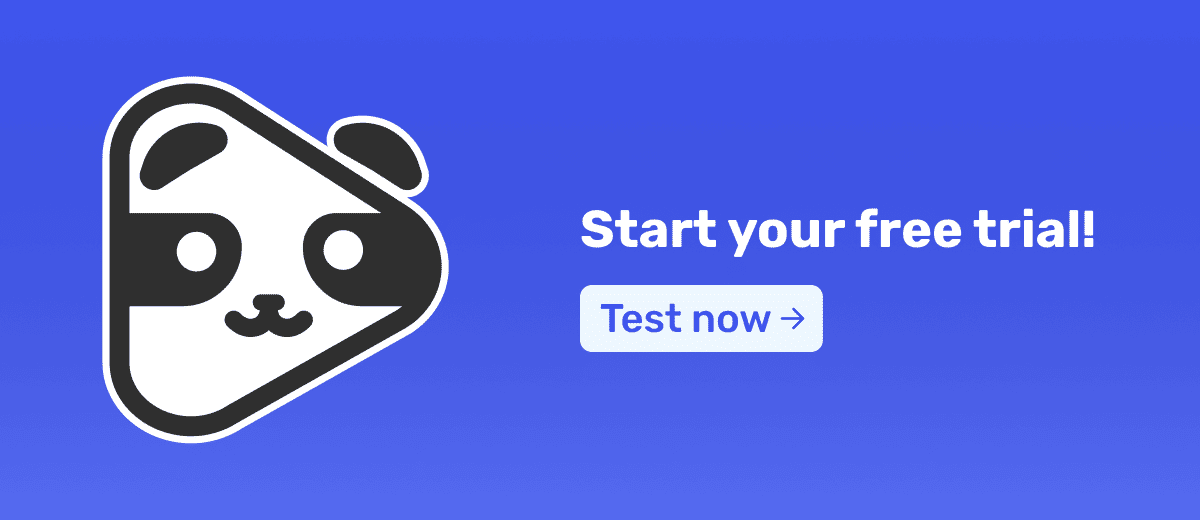You recorded and published your online course, but now the inevitable question arises: "How do I sell this?"
In a digital market where you compete with 362 million other content creators, it's not enough to have great content: you need to reach the right people.
That's where Direct Response comes in.
In this article, you'll learn how to use this approach to sell more without relying on an established brand or authority in the market.
What is Direct Response?
Direct Response, or Direct Marketing, is a marketing strategy that seeks to generate immediate responses from the audience to a communication you’ve made.
In other words, at the end of content (advertisement, VSL, or email), the user must take an action, which could be:
- Schedule a presentation;
- Download a material;
- Purchase a course.
While Inbound Marketing focuses on lead generation and building relationships through content, Direct Response works in a targeted way to generate immediate results: “If you have this problem, I have the solution. Click here and solve it now.”
Why is Direct Response So Effective for Infoproduct Creators?
Unlike branding actions and inbound marketing, which generate long-term results, Direct Response works with targeted messages designed to convert almost instantly.
This strategy brings results because it addresses a latent pain of the target audience.
That is, you don’t need to be a well-known personality in the market to make sales.
The only thing you need is an offer that addresses a niche and a well-structured copy to attract it.
Example of Direct Response

The Direct Response strategy takes a user through the following steps:
- Discovery: On Instagram, the user is impacted by an ad that invites them to access a page;
- Presentation: The user watches a VSL (Video Sales Letter) that presents a pain, delivers a solution, and invites the user to take action.
- Decision: The user completes the journey by purchasing the product presented to them.
Before Selling, Understand the Awareness Level of Your Audience
One of the biggest mistakes of those starting with Direct Marketing is trying to sell to everyone.
A well-known fact among marketing professionals is that only 3% of your audience is ready to buy right now.
To increase your course’s conversion rate, you need to adapt your message to the awareness levels of your potential customer.
What are Awareness Levels?
This concept was created by Eugene Schwartz, one of the greatest references in the history of copywriting.
He divided the audience into five levels of awareness, which indicate how much the person knows about the problem they have and the solution you offer.
The levels are:
- Completely Unaware: The person doesn’t know they have a problem, much less that there’s a solution.
- Problem Aware: They know something is wrong, but they still don’t know the solutions.
- Solution Aware: They know there are ways to solve it.
- Product Aware: They know your specific solution (e.g., your course) and are evaluating if it’s the best option.
- Most Aware: They’re ready to buy. They just need a final push (a bonus, a discount, or real scarcity).
Direct Response works on levels 2, 3, and 4 — that is, when the audience already knows they have a problem, has some idea of the solutions available, and is considering options.
How to Apply Direct Response to My Infoproduct
Now that you understand the logic behind Direct Response and the importance of adapting your communication to the audience’s awareness level, it’s time to take action.
Here is a practical step-by-step guide to applying the strategy, even if you haven’t made any sales yet.
1. Know your target audience
You need to understand your potential customers. Here are some points to map out:
- Specific pains: What’s preventing this person from moving forward?
- Real desires: What do they want to achieve?
- Common objections: What might make them hesitate?
- Language used: How do they describe their problems and goals?
If you don’t know how to answer any of these questions, here are some ways to find out:
- Forms and polls on Instagram
- Reading comments in groups and social networks
- Platforms like Answer The Public or Google Trends
2. Create an Irresistible Offer
Here’s an important secret: you don’t sell courses, you sell transformation.
A good offer goes far beyond the course content. It communicates real value, focuses on results, and uses mental triggers to make the buying decision easier.
Here are some elements that strengthen your offer:
- Exclusive bonuses (e.g., individual consulting, spreadsheets, templates)
- Real scarcity (e.g., a limited number of spots or limited time)
- Satisfaction guarantee (e.g., 7-day guarantee or full refund)
- Social proof (e.g., testimonials, prints, student results)
3. Choose the Channel for Your Campaign
You need to define the channels to generate demand, and the ones that will be used to convert them.
The conversion channel will usually be a landing page with a VSL to persuade the visitor.
But to get people to this page, you typically use:
- Instagram/YouTube ads with a clear CTA;
- Email sequences focused on activating the lead to make a purchase.
4. Write Persuasive Copy
The copy is the heart of Direct Response, both for the landing page and the VSL.
It needs to focus on what the reader wants to solve, not what you want to say about your course.
There are many VSL templates available, but they generally follow the structure below:
- Attention: Start with a strong question or statement (hook);
- Identification: Show that you understand the reader's pain;
- Solution: Present your proposal and show how it solves the problem;
- Proof: Show that it has worked for others;
- Action: Tell the reader exactly what to do next.
Also read: What is a VSL and Why You Should Create One (+10 Steps)
5. Launch Your Campaign and Monitor the Data
Once you’ve prepared all the elements, launch your campaign and start monitoring metrics such as:
- CTR (Click Through Rate): Click-through rate on ads;
- CPL (Cost Per Lead) or CPA (Cost Per Acquisition);
- Conversion on the sales page or checkout;
- Return on Ad Spend (ROAS).
6. Test, Optimize, and Scale What Works
There is no perfect campaign right away. Direct Response is a methodology that requires constant adjustments, and to speed up the process, run tests.
In these campaigns, you can test:
- Titles and subtitles on the page;
- Thumbnail and hook of the VSL;
- Ad copy;
- Offer and bonuses;
- Landing page structure;
- CTA and button colors.
If you want to know more about the topic, read our article on A/B testing where we discuss best practices for this action.
Common Mistakes in Direct Response
Although Direct Response is a very powerful strategy, there are some common mistakes that can harm your campaign. Here are the main ones:
Focusing too much on the product, not on the customer’s pain
Remember, people don’t buy the course itself, but the transformation they will experience by purchasing it.
If you don’t connect your offer directly with the pain of your audience, your copy won’t generate the desired effect.
Using vague or overly technical copy
Vague language doesn’t create urgency. Be clear, direct, and simple.
Use social proof, mental triggers, and clear benefits to show why the offer is so valuable.
Ignoring the data and not testing
Many infoproduct creators only care about how many sales they’re getting.
But to improve a campaign, you need to monitor other indicators, such as CTR, CAC, ROAS, and retention time on the VSL.
Not including a clear call to action
This may seem obvious, but it’s common to forget to include a strong and visible CTA.
Your audience needs to know exactly what to do: “Click here,” “Secure your spot,” “Download the material now.”
Tips for Increasing Conversion with Direct Response
Now that you know how to build a Direct Response campaign, it’s important to choose the right tools to enhance your results.
In this strategy, using a VSL is almost inevitable due to its conversion power.
And to increase your conversions, even the choice of hosting matters.
One of the major advantages of using a platform like Panda Video is the distraction-free player, ideal for sales videos.
Additionally, with Panda, you get features that will boost your results, such as:
- Smart Autoplay;
- Fake progress bar;
- A/B Testing;
- Thumbnails for start, pause, and end;
- And much more.
Explore all the features of Panda Video and start your free trial today!




